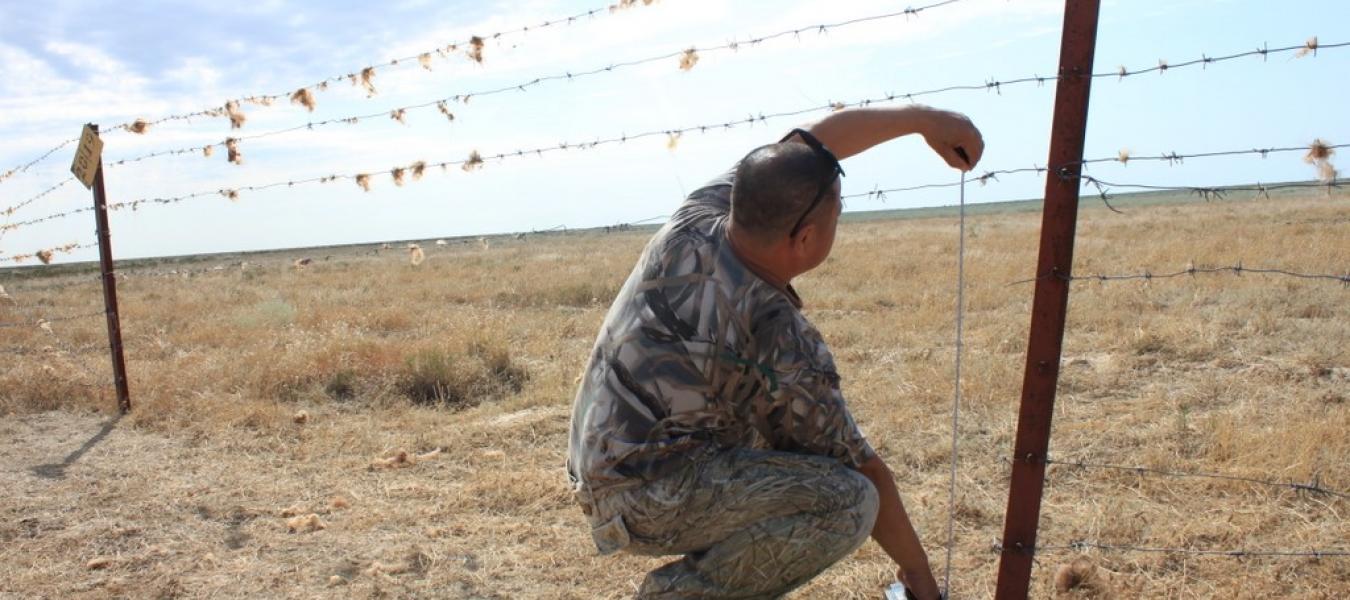
Unimpeded saiga migration must continue on the Ustyurt Plateau!
Alexander Putilin. Association for the Conservation of Biodiversity of Kazakhstan, aleksandr.putilin@acbk.kz
In the autumn of 2011 Kazakhstan began building a fence about 1.7 m high, consisting of 8 rows of barbed wire, along the country's border with Uzbekistan and Turkmenistan. The construction work was finished by the end of 2012. For about 150 km this border fence runs across the habitat of the Ustyurt saiga population - a population causing the deepest concern due to its continuous decline. The saiga of the Ustyurt Plateau spend most of their time in Kazakhstan; however, in winter they migrate to Uzbekistan, crossing the border between the two countries.
The border fence keeps the animals away from their wintering areas, which may result in a decrease in saiga habitat on the Ustyurt Plateau. As saiga cannot get through the border fence, they have to stay in areas that do not suit them best: food shortage leads to higher mortality and, therefore, to population decrease. In winter they starve and suffer from low temperatures, while in spring they cannot reach the good pastures situated further to the north.
This critical situation prompted the Frankfurt Zoological Society, Flora and Fauna International and the Convention on Migratory Species to prepare a report in 2013 giving suggestions for mitigating the fence's negative impact on saiga migration (http://www.cms.int/en/publication/saiga-crossing-options). The report's author proposes that the lower rows of wire be removed from the fence to allow saigas to cross without difficulties.
The border protection service of the Committee for the National Safety of the Republic of Kazakhstan answered an official request from ACBK about the suggestions in the report, assuring us that the three lower strands of wire would be removed at an interval of 1 km within all saiga habitat. In order to ascertain whether the modifications had been made, a team of researchers inspected the fence, on an expedition organised by ACBK under the Altyn Dala Conservation Initiative, in cooperation with Okhotzooprom and the border protection service, on 19-21 June 2016.
The inspection started at the western end of the Kazakh border, in Aktobe province, and finished in the Aral Sea area. During the inspection the team established that the border protection service had completed all their undertakings and cleared 125 passages for saiga. In addition, there was an 11 km long section in which the lower rows of wire were absent throughout (Figure).
In order to ensure free migration of the Ustyurt saiga population both countries need to take additional steps to control poaching. The control should be even stricter during migration; forming large aggregations at this time, the animals can become an easy target for poachers. This is why it is essential to join forces to monitor migration from both sides of the border and to protect the saiga.
